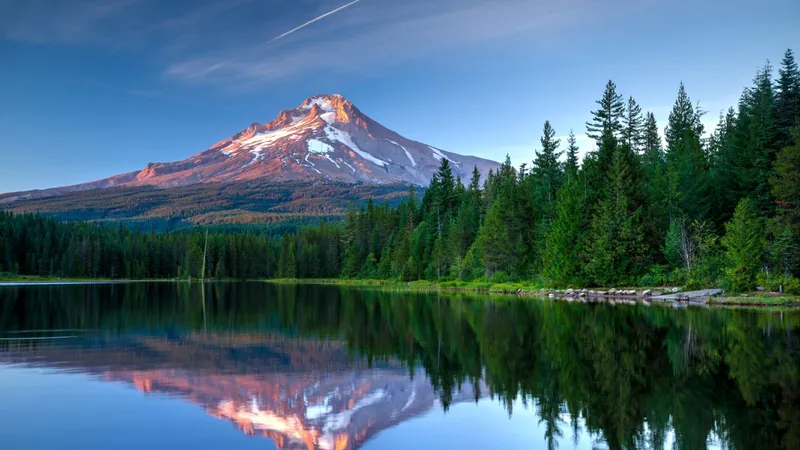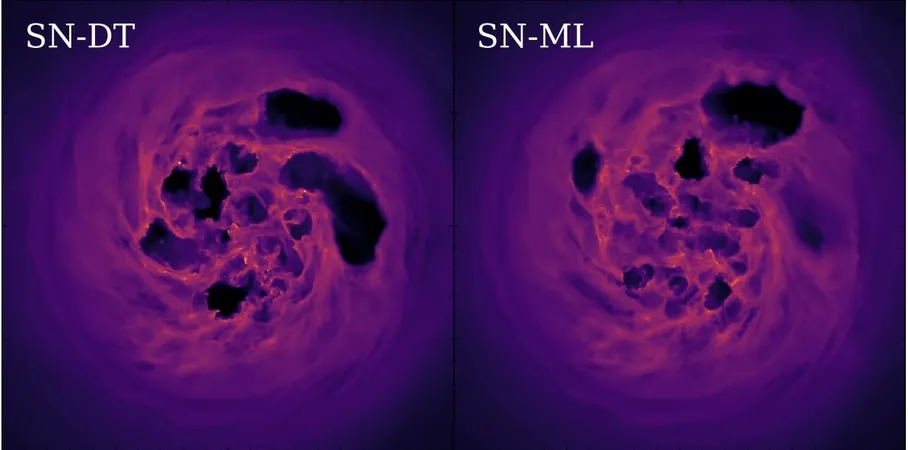
Groundbreaking Discovery: Massive Underground Water Reservoir Found in Oregon's Cascades – Twice the Size of Lake Mead!
2025-01-15
Author: Jia
Groundbreaking Discovery: Massive Underground Water Reservoir Found in Oregon's Cascades – Twice the Size of Lake Mead!
In an astonishing revelation, researchers have uncovered a colossal reservoir of groundwater nestled beneath the majestic Oregon Cascades, containing more than double the volume of Lake Mead. According to a new study, this hidden aquifer boasts at least 19.4 cubic miles (81 cubic kilometers) of water, potentially reshaping our understanding of regional water use and volcanic activity.
Leif Karlstrom, an Earth scientist from the University of Oregon and co-author of the study, described this underground water deposit as a "continental-size lake stored in the rocks at the top of the mountains, like a big water tower." This groundbreaking finding suggests that the Cascade Range, which stretches around 700 miles (1,100 kilometers) from Northern California to British Columbia, might be home to the largest aquifer of its kind in the world.
The Cascades are a volcanic mountain range formed over millions of years of intense geological activity. The High Cascades, characterized by younger volcanic rocks dating back around 8 million years, showcase smooth slopes and active volcanic systems. In contrast, the older Western Cascades, with rock formations over 45 million years old, reveal deep canyons and extensive valleys shaped by ancient water flows.
Published in the journal PNAS on January 13, the study employed innovative methods to analyze temperature variations in the mountain's rocks. Researchers observed that while deeper rocks generally maintain high temperatures due to pressure and heat from the Earth's core, certain areas displayed a consistent temperature despite increasing depth. This intriguing phenomenon hints at water percolating through the rocks, suggesting a vast, coolant reservoir below.
The investigation, initially aimed at understanding the geological evolution of the Cascade landscape and the movement of water, revealed significant implications for the region's water resources and volcanic behavior. Co-author Gordon Grant, a hydrologist with the U.S. Forest Service, emphasized the findings' relevance: "We discovered important things that people care about: the incredible volume of water in active storage in the Cascades and also how the movement of water and the hazards posed by volcanoes are linked."
Interestingly, the presence of deep-penetrating water could also influence volcanic activity. When water interacts with magma, it can vaporize into steam, escalating underground pressure and potentially triggering explosive eruptions.
As the world grapples with climate change and increasing drought conditions, this underground aquifer could serve as a precious water resource for communities in the region. However, researchers caution that further investigation is crucial to assess the long-term impacts of drought and shifting weather patterns on this newly discovered reservoir.
"We have a geological gift in this region, but our understanding is still in its infancy," Grant remarked. "It's vital to explore what happens during dry spells or insufficient snowpack winters—those critical questions must guide future research and resource management strategies."
Stay tuned for more updates on this incredible discovery that could change the future of water sustainability in the Pacific Northwest!


 Brasil (PT)
Brasil (PT)
 Canada (EN)
Canada (EN)
 Chile (ES)
Chile (ES)
 Česko (CS)
Česko (CS)
 대한민국 (KO)
대한민국 (KO)
 España (ES)
España (ES)
 France (FR)
France (FR)
 Hong Kong (EN)
Hong Kong (EN)
 Italia (IT)
Italia (IT)
 日本 (JA)
日本 (JA)
 Magyarország (HU)
Magyarország (HU)
 Norge (NO)
Norge (NO)
 Polska (PL)
Polska (PL)
 Schweiz (DE)
Schweiz (DE)
 Singapore (EN)
Singapore (EN)
 Sverige (SV)
Sverige (SV)
 Suomi (FI)
Suomi (FI)
 Türkiye (TR)
Türkiye (TR)
 الإمارات العربية المتحدة (AR)
الإمارات العربية المتحدة (AR)